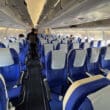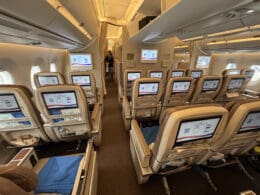There are a few large countries with long domestic flights out there. One such country is the U.S.. There are quirks to the experience and it feels quite American, though overall the experience is accessible (if rather no-frills). While not a country, there are lots of intra-European flights that basically operate like domestic flights – these can be even more devoid of personality, mainly due to the interconnectedness of a lot of European cultures, as well as the short flight time and the price-centric competitive landscape.
Then there’s China. China is the largest country entirely in Asia by area (it’s almost three times larger than India), and especially given its socioeconomic status and the number of airlines that operate within China, it’s got the most intense competitive landscape out of any Asian domestic market. Add on the cultural differences that make China unique in other ways, and flying within China really becomes a unique experience.
I flew China Eastern’s A330 from Shanghai to Shenzhen, which is one of the airline’s “domestic shuttle” routes – just today there were 25 frequencies between Shanghai and Shenzhen, 22 of which were from Shanghai Hongqiao. Since I was connecting from Madrid, I took one of the airline’s few Shanghai Pudong (PVG) to Shenzhen (SZX). Here’s my experience.
Checking in for my China Eastern domestic flight
I bought my China Eastern flight from Madrid to Shenzhen via Shanghai on the English China Eastern website. China Eastern doesn’t allow online check-in out of Madrid (at all), so I had to check in at the airport before I was given any sort of option to retrieve my mobile boarding pass. While a mobile boarding pass from Madrid to Shanghai didn’t generate, the app did manage to generate a mobile boarding pass from Shanghai to Shenzhen.
Here’s the catch. The China Eastern app functionalities are wildly different in English and in Chinese. In English, I could barely manage to load my itinerary, let alone do anything such as change my seat or check in online. However, in Chinese, I could do both of those things…including generating my first ever Chinese mobile boarding pass.
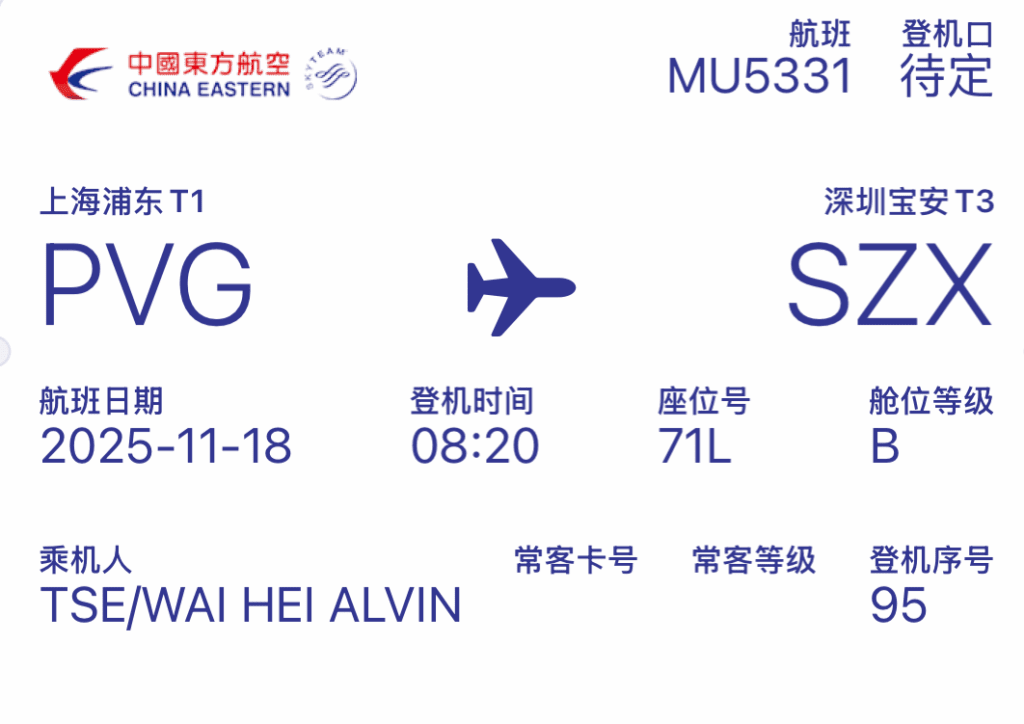
Boarding pass in Chinese!
Once in Shanghai, it was possible to transfer from an international to a domestic flight airside, though that only opened at 6:30 AM (it was around 6:10 AM by the time I reached that area). I decided to head landside, partially because I wondered if it would be faster, but also because I wanted to register my Hong Kong-issued mainland entry permit for immigration e-gate access. I was able to successfully do the latter.
Using the China Eastern lounge at Shanghai-Pudong Airport
Although I was flying in economy, I had access to the China Eastern lounge at Shanghai Pudong Airport. China Eastern lounges are open to AmEx Platinum cardholders, as long as you’ve got a China Eastern or Shanghai Airlines boarding pass (you can’t be flying any other airline).
I was expecting the lounge to be packed, so I was pleasantly surprised to see it mostly empty. The lounge did fill up over the course of the morning, though many areas were still left with empty seats, which was good to see.
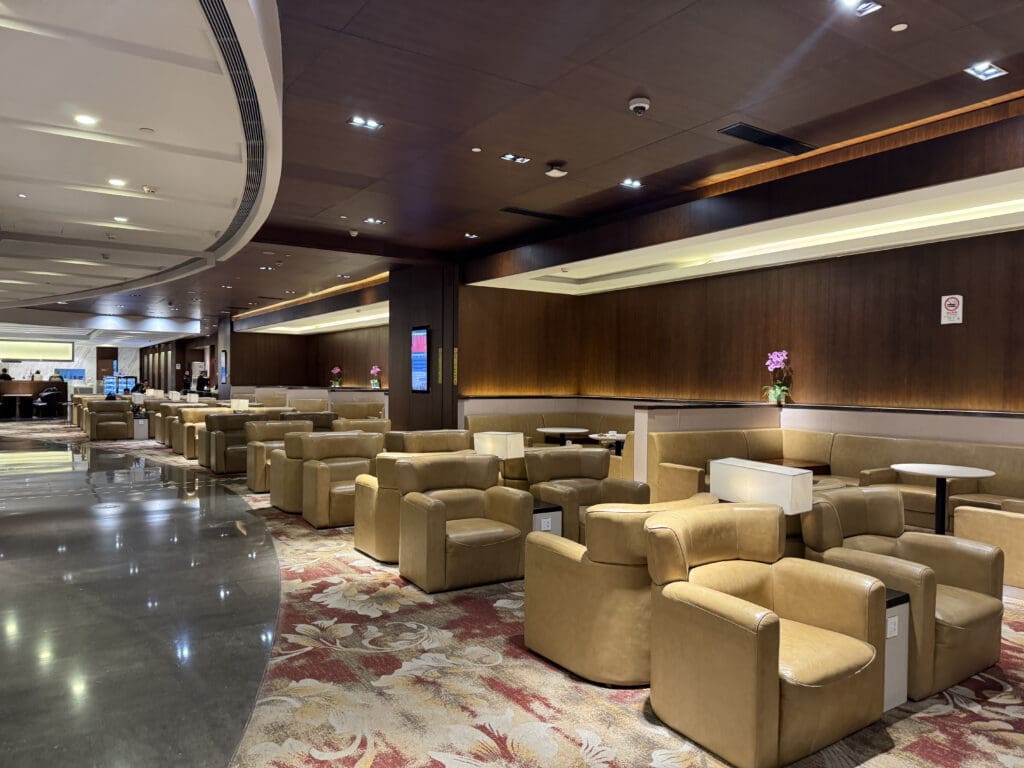
China Eastern Lounge No. 35 at Shanghai Pudong Airport
It may have been 7 AM, but don’t expect any scrambled eggs or bacon here. Hot breakfast options included bamboo shoot and lettuce stir fry, sweet potato and “Cajun roasted potato”, marinated tea egg, and waxy corn.

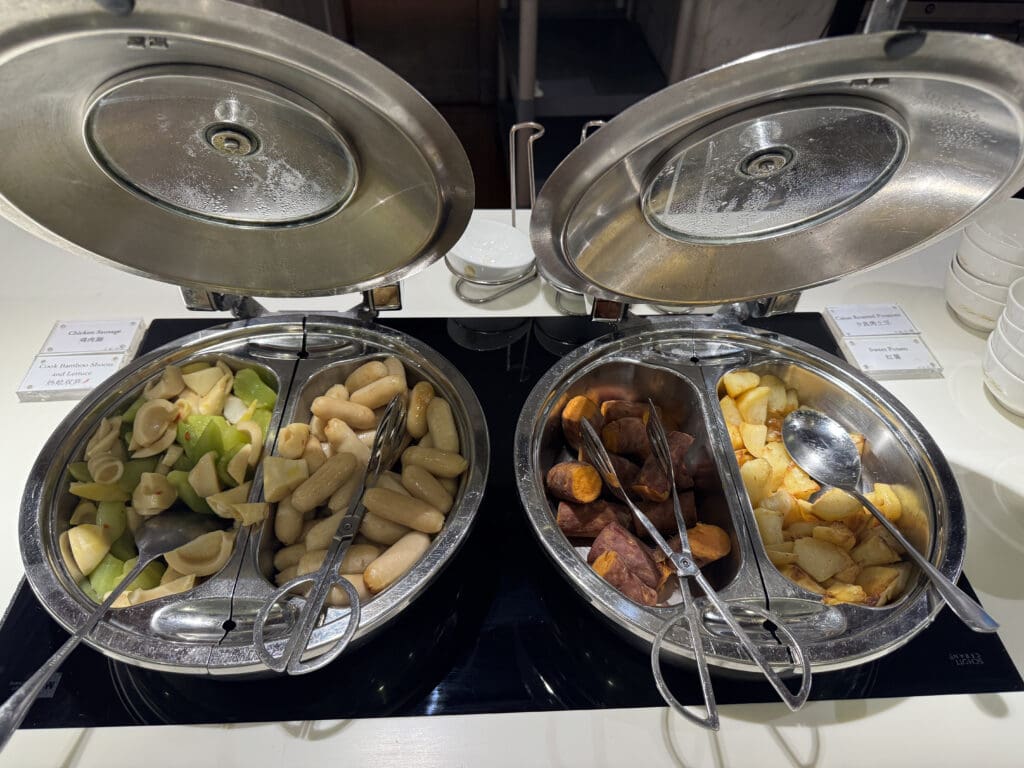
Breakfast at the China Eastern lounge at Shanghai
I’d say this is “my kind of food”, as I grew up in Hong Kong for 18 years. However, I can see this being a complete culture shock if you’re coming to China for the first time, or simply transiting (admittedly this is the domestic lounge).
I wasn’t very hungry, though I couldn’t pass up the opportunity to try the airline’s signature “MU noodle”. The noodles were very good, and the signage present recommended three condiments, all of which I added.
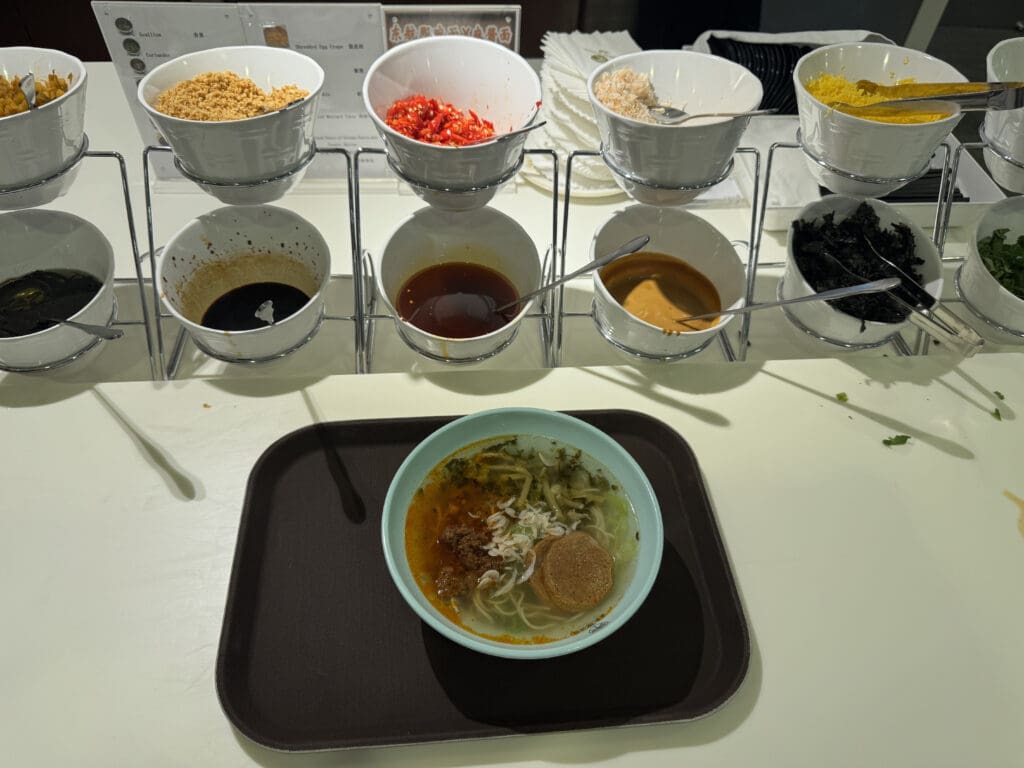
China Eastern Lounge Shanghai Pudong “MU Noodle”
It was also cool to see the demographic within the lounge this Tuesday morning – most people were in full suits and ties, and were clearly commuting on their way into work for the week (for some, maybe even the day).
China Eastern A330 Economy Class Cabin and Seat
While China Eastern has a massive hub at Shanghai Pudong Airport, a majority of the gates are located by the airport’s satellite terminal, which opened in 2019. The “main” Terminal 1 only features 14 jetbridges – everything else either runs from the satellite terminal, or is connected via a bus gate. We got the latter.
As a perk, SkyPriority passengers connecting from premium economy actually get SkyPriority throughout the entirety of their itinerary. This meant that I could theoretically board with business class. Unfortunately, the business class bus wasn’t ready by the time we were boarding, so the economy bus was boarded first.
I figured I’d make a gamble – either to board the (much smaller) business class bus and risk boarding after a full economy bus (not great for aircraft photos), or I’d board the economy bus. I chose the latter, figuring I’d navigate a smaller group of people if the business class bus did end up leaving first. I’m not sure which one did end up leaving first, as our flight was boarded really proximately to another flight to Beijing (which had a very similar setup).
It was 9°C in Shanghai, so there was a scramble to the aircraft once the bus doors opened (I was also closer to the wrong side).

China Eastern A330 at Pudong Airport
We boarded our 13-year-old A330-200, which featured 18 business class seats and 246 economy class seats. I wanted to maximise the chances of having an empty seat next to me, so chose a seat in a row near the back (despite the fact that I had access to one of the “preferred seats” due to my premium economy itinerary). The last row was blocked from advance seat selection, unfortunately.
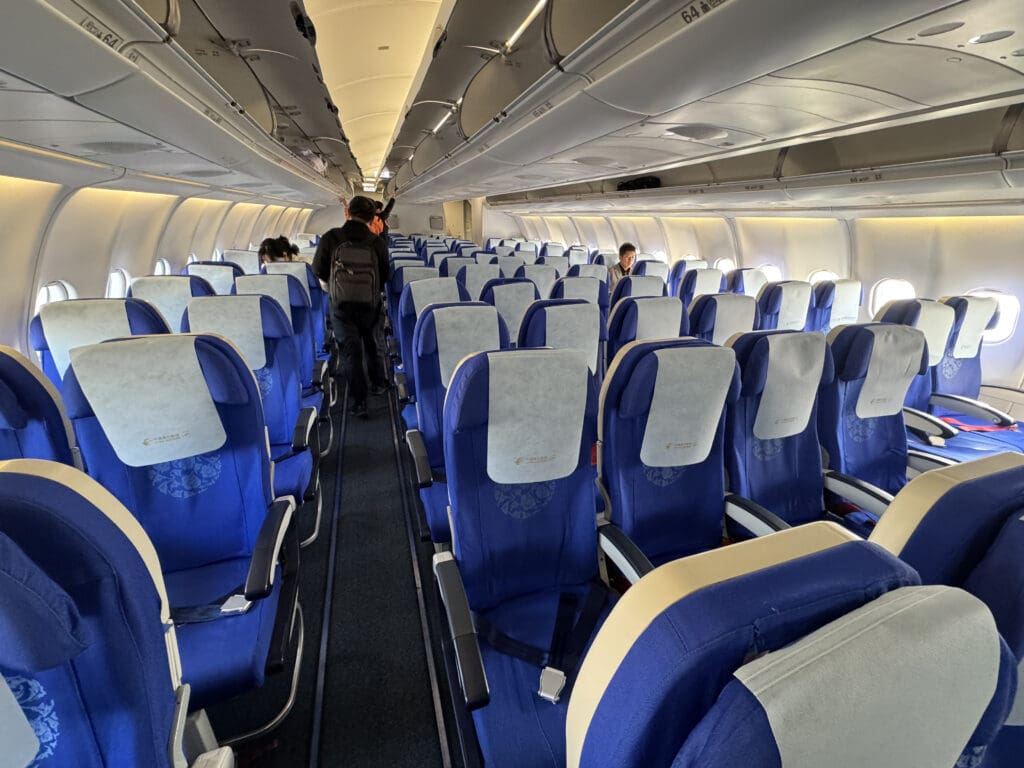
China Eastern A330 Economy Class
Albeit the 13-year-old aircraft, these Weber 5751 seats had adjustable headrests, and reclined a fair bit. While my flight was only 2h 40m, these planes fly as far as Rome, which is blocked at 12h 35m.

China Eastern A330 Economy Class Recline
Despite being 13 years old, each seat had a universal power outlet and a USB-A power port (no USB-C ports, as they didn’t exist when these seats were installed).
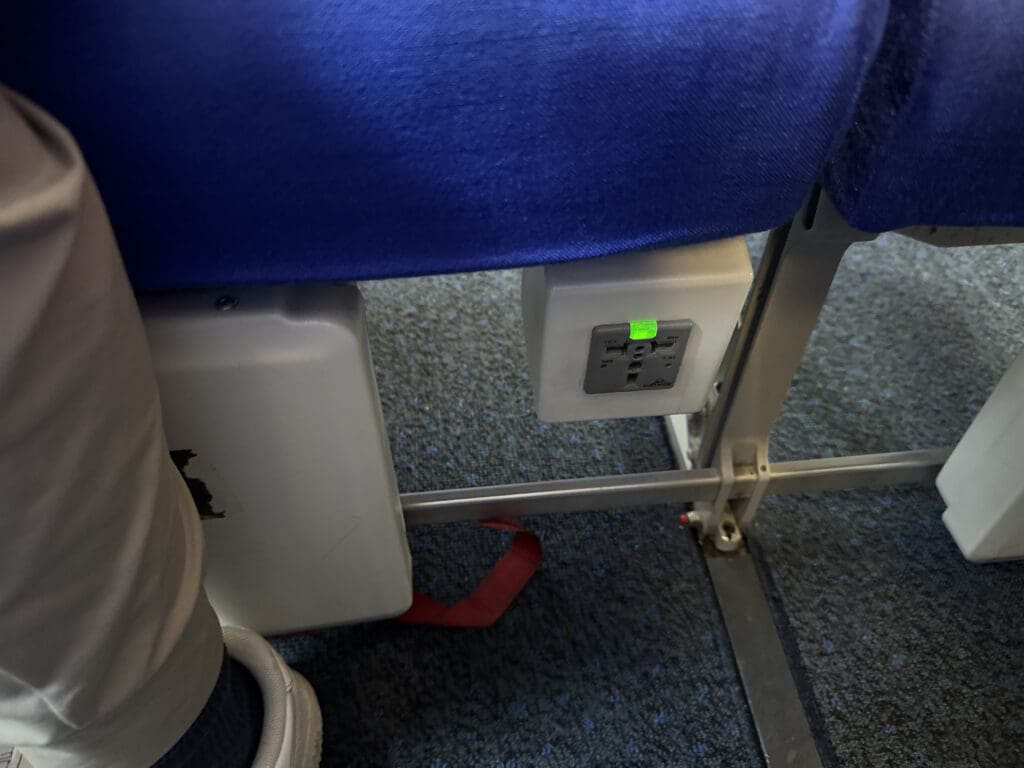
China Eastern A330 Economy Class Power Port
There was no at-seat bedding, though crew came around asking whether anyone wanted a blanket (pillows were never proactively provided).
While these A330s regularly fly longhaul routes, from looking at FlightRadar24, the average flight time for this China Eastern A330 is about 2-3 hours. This shows that China Eastern utilises their widebody fleet for so many high-capacity shorthaul flights that they actually rarely end up operating a longhaul.
This is truer of the airline’s A330s than it is of their A350s and 787s (the A350 operating my Madrid-Shanghai flight seems to more regularly operate 8+ hour flights), though when you consider that there are 20+ daily flights operating these shuttle routes, it’s still wild to see how much demand there is for intra-China travel.
China Eastern A330 Economy Class Meal
In the UK or U.S., only the more premium airlines serve any sort of food to economy passengers (I raved about my Air France flight when I was served a sandwich and a free beverage mid-flight). This isn’t true in Asia.
On this domestic flight, there was no choice of breakfast – a hot meal was provided to everyone who wanted to eat. Goodbye bouncy omelette, hello Chinese dim sum – and I don’t mean the typical prawn dumplings and siu mai that many Westerners would already consider “exotic cuisine”. Breakfast was black glutinous rice pudding with pork and pickled vegetable dumplings, served with a slice of yam and zucchini. The packaged nuts were “sauce beef flavour sunflower seeds”, there was a Chinese yoghurt drink (with a straw, resulting in lots of sucking noises throughout the cabin as people usurped their beverages), a pastry, and cold snow fungus dessert soup to finish.
Once again, this wasn’t foreign to me personally, though I can’t imagine telling one of my friends in London about this run-of-the-mill breakfast with a straight face.

China Eastern A330 Economy Class Meal
China Eastern A330 Economy Class Entertainment and WiFi
The entertainment selection on this China Eastern A330 was just as weak as it was on the A350, with an even weaker UI. To be fair, it’s great that this short flight has an entertainment system at all, though their narrowbody aircraft don’t feature an entertainment system (this isn’t Cathay Pacific, which has a 100% fleet entertainment system and WiFi guarantee).
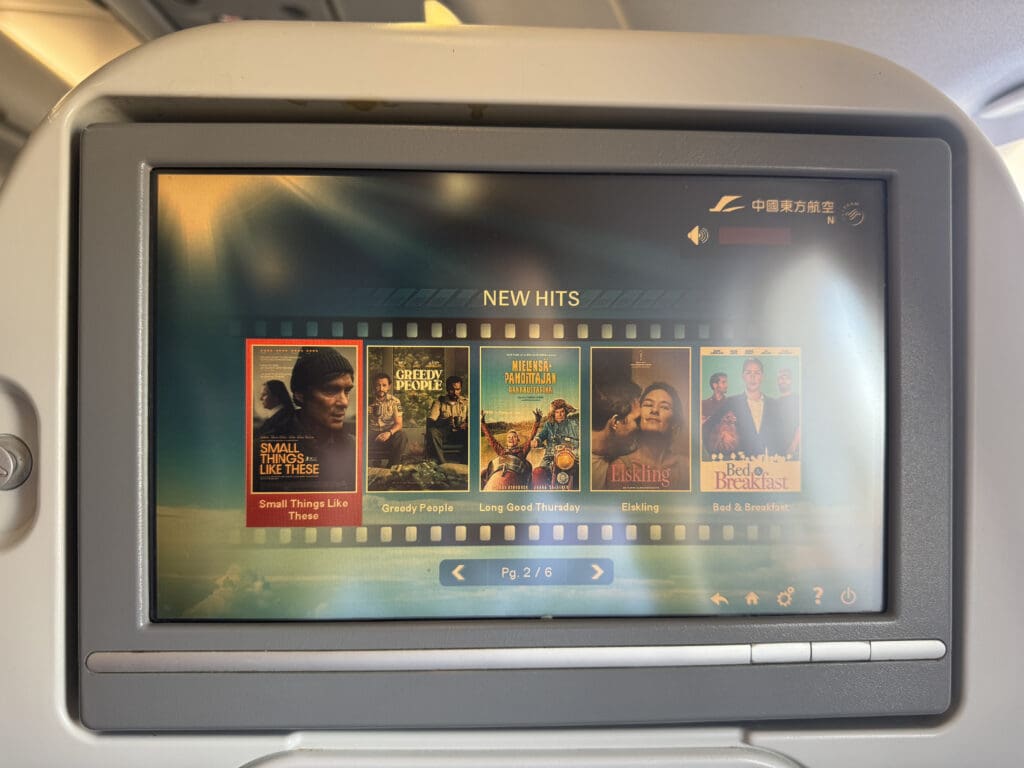
China Eastern A330 Economy Class Entertainment System
The UI was outdated, and not well set up – for example, the eBooks selection was completely empty, and would just redirect back to the homepage.
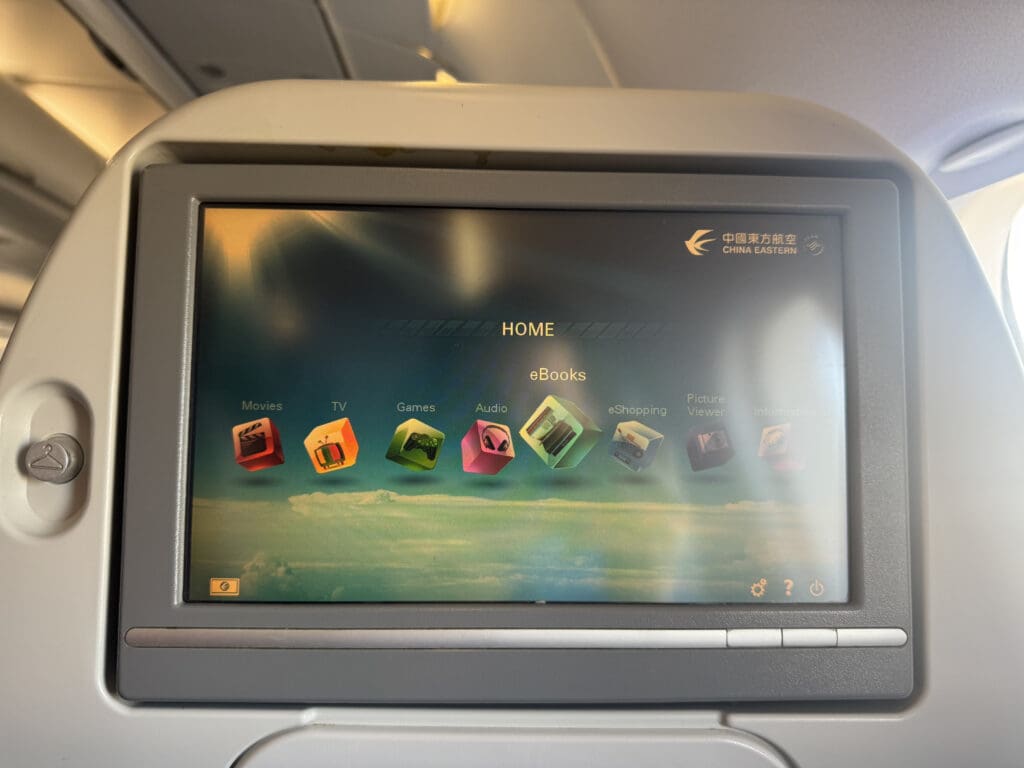
China Eastern A330 Economy Class Entertainment Selection
However, I’m kicking myself slightly – I’d already tried out the WiFi option onboard China Eastern’s A350, so I figured there wasn’t a need to buy WiFi on this domestic flight. Go figure China Eastern recently made WiFi free on widebody aircraft operating these domestic shuttle routes, which I only found out when we landed in Shenzhen. Of course you’ll still have to navigate around the great Chinese firewall (all typical non-Chinese messaging apps would be blocked except iMessage), though I would’ve loved to see how fast speeds were on this flight.
To be fair, morning Europe-Asia flights are atrociously timed, and I was feeling very tired by the time I got on this flight. So I spent most of the flight passed out at my seat, much like most of the plane, which likely would’ve woken up really early even if they weren’t connecting.

How to connect to (free) WiFi onboard China Eastern shuttle routes
Both of these features are only available on the airline’s widebody aircraft, so you wouldn’t currently get free WiFi or entertainment onboard an A321, for example.
Conclusion: China Eastern A330 Economy Class
My first domestic flight in China in eight years was an interesting one, as I got to compare the differences to flying domestically within Europe (intra-Schengen) or the U.S.. While this flight was only 2h 40m, given the competitive landscape, the flight was mostly full, all passengers were offered a hot meal, and there was free WiFi. It’s wild to think that this was one of 25 flights operating between Shanghai and Shenzhen yesterday.
Have you flown intra-China recently? How was your experience?

